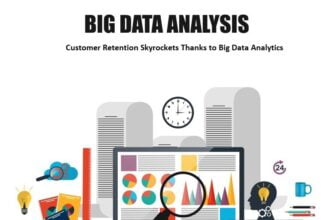An occasional series in which a review of recent posts on SmartData Collective reveals the following nuggets:
There’s more to analytics than…
Although understanding data and developing statistical models is certainly an important component of an analytic project, this is just one aspect of analytics. This aspect includes cleaning data, enriching data, exploring data, developing features, building models, validating models, and iterating the process. From a broad perspective, this is a process in which the input is data and the output is a statistical model. When most people think of modeling, this is what they think of. For many analytic projects, this is just a small part of what is required for a successful engagement.
A missing link
Most organizations today do not track who is critical, who will likely leave, or why they will leave, so there’s no opportunity to develop effective strategies to retain critical employees. Workforce analytics is the missing link in today’s business strategy. It is imperative for organizations to know how to attract, grow and retain these employees, as well as sustain the already seasoned pro…
An occasional series in which a review of recent posts on SmartData Collective reveals the following nuggets:
There’s more to analytics than…
Although understanding data and developing statistical models is certainly an important component of an analytic project, this is just one aspect of analytics. This aspect includes cleaning data, enriching data, exploring data, developing features, building models, validating models, and iterating the process. From a broad perspective, this is a process in which the input is data and the output is a statistical model. When most people think of modeling, this is what they think of. For many analytic projects, this is just a small part of what is required for a successful engagement.
A missing link
Most organizations today do not track who is critical, who will likely leave, or why they will leave, so there’s no opportunity to develop effective strategies to retain critical employees. Workforce analytics is the missing link in today’s business strategy. It is imperative for organizations to know how to attract, grow and retain these employees, as well as sustain the already seasoned professionals that bring depth and value to the organization..
An organization within an organization
My concerns about IT’s role relate to the situation that I see in some companies where IT is a department set apart, rather than being a central part of the overall business. In this type of circumstance (which is perhaps more common than anyone would like to think), the success of the IT and the non-IT parts of the business are decoupled. Under these arrangements, it would be feasible for IT to be successful and the business to suffer major losses, or for the business to post record profits while IT fails to deliver projects. Of course, such decoupling can happen in other areas; for example Product A could have a stellar year, while Product B fails miserably – the same could happen with countries or regions. However, there is something else here, a sense that IT can sometimes be an organization within an organization, in a way that other service departments generally are not.
Offshoring: time to reconsider
At the least, the past five years of offshoring have proven that the logic of the business case depends as much on what one leaves out as on the numbers assigned. The process of globalization will continue to amaze, frustrate, and surprise, despite the best predictions of smart people. Unexpected consequences, for both good and ill, will continue to challenge firms — and individuals — on all sides of the equation.
Finding out why they’re really unhappy
Search Engines are fundamentally top-down in that you know what you are looking for when launching a query. However, Text Analytics is bottom-up, uncovering hidden patterns, relationships and trends locked in unstructured data – including call center notes, open-ended survey responses, blogs and social networks. Now businesses have a way of pulling key concepts and extracting customer sentiments, such as emotional responses, preferences and opinions, and grouping them into categories. For instance, a call center manager will have a hard time extracting why customers are unhappy and churn by using a search engine for millions of call center notes. What would be the query? But, by using Text Analytics, that same call center agent will discover the main reasons why customers are unhappy, and be able to predict if they are going to churn.
Creating an entrepreneurial environment
While Fortune 500 companies are attempting to integrate the practice of corporate entrepreneurship, I believe it limits the art/science of discovery. I believe that corporations must truly start to allow the entrepreneurial mindset to take shape and flourish. The corporate culture must adopt an environment that allows its people (regardless of rank / title) to propel innovation and initiative. Everyone has something to offer, if giving the opportunity.
Don’t forget manual review and correction
An obsessive-compulsive quest to find and fix every data quality problem is a laudable but ultimately unachievable pursuit (even for expert “lake cleaners”). Data quality problems can be very insidious and even the best “lake cleaning” process will still produce exceptions. Your process should be designed to identify and report exceptions when they occur. In fact, as a best practice, you should also include the ability to suspend incoming data that contain exceptions for manual review and correction.






